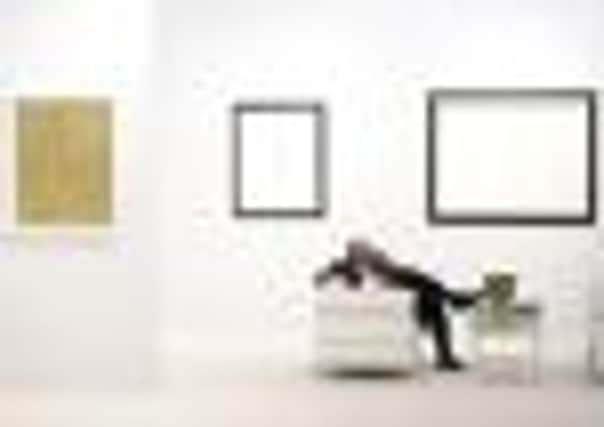‘A collective wealth to match the GNP of a small nation’ - Welcome to the European Fine Art Fair


The answer is TEFAF, the European Fine Art Fair. Held annually in Maastricht, it is the largest art fair in the world with stands and dealers from 18 countries displaying museum quality art objects of every possible kind.
The red spot in question was put on a Rubens Crucifixion sold by Bernheim-Colnaghi at the opening of the fair. Nor was it the only work of that sort of value to sell quickly. A full-length portrait of Henry VIII was sold by another London gallery, Weiss, for a similar sum within the first few minutes. One insider could identify ten million dollars of sales in the first hour.
Advertisement
Hide AdAdvertisement
Hide AdIt is an extraordinary event. You need at least a day to see it all and a cool 55 euros to get in. Everything is on an extravagant scale: 150,000 tulips for decoration, Bollinger for a polyglot crowd of 10,000 at the private view with a collective wealth to match the GNP of a small nation; a very smart crowd too, no jeans or anoraks, and some shoes to match the art works.


TEFAF is a non-profit, dealers’ cooperative and that means that for all the extravagance, one London dealer reckoned it is actually cheaper to bring everything, including staff, to Maastrcht than it had been to take a stand at the former Grosvenor Antique Fair in London. Because it is a cooperative however, and everything is vetted by a team of experts that includes dealers, there is plenty of room for rivalries and politics.
It cannot be much fun to have to take back stock, unseen, because in someone else’s opinion it is not quite what it purports to be. That risk does lead to undue caution and it shows. There is a lot of sameness and a good many works have the glossy sheen that comes from spending too long in the trade. Still, there were some treats. Agnews had a lovely early Claude that would grace any museum. The same was true at the Noortman Master Paintings stand of a beautiful, late fifteenth-century Madonna and Child somewhere in style between Botticelli and Lorenzo de Credi and attributed to the Florentine Master of the Holden Tondo.
At Weiss, alongside Henry VIII were three superb full-length Jacobean portraits that from the day they were painted until now had hung in Cowdray Park. It is sad when such things are dispersed. That is the downside of a fair like this. Everything is reduced to money. Those pictures hanging in one place for so long had a different sort of value, one that has no place, nor even meaning here, but is now forever lost.
On the whole though the modern dealers made a livelier display than the old masters. There are some lovely Matisse drawings around, quite a lot of late Picasso, but also a lovely Picasso portrait of Olga from 1917. Marlborough Gallery had several pictures by Paul Klee. Too rarely seen, he is always a delight. There is not so much actual contemporary art, but the Fine Art Society had one contemporary work that was a quiet show-stopper, a still life of flowers from the early 17th century turned into an extraordinary piece of electronic art by Rob and Nick Carter.
The painting by Ambrosius Bosschaert (there is a real one on a stand nearby) is perfectly reproduced, but as you watch, things happen. The stillness is deceptive. The clouds move across the sky, the flowers open, a caterpillar nibbles a leaf, a butterfly flutters across the scene; a still-life has come to life. The Fine Art Society is unusual, too, for it straddles old and new. Hanging nearby was a lovely little Wilkie, for instance, and also a beautiful and very rare silver clock by Margaret and Frances Macdonald. There was not much else of Scottish interest however, unless you count a very dull, recent Stephen Conroy at Marlborough.
Works on paper ranging from Claude, Rembrandt and Watteau, to Klimt, George Grosz, Miró and Picasso might suggest opportunities for the more modest pocket, but here too you are often talking hundreds of thousands. There are no bargains, or at least I didn’t find any. Nevertheless it is a unique opportunity to see, not just some very good art, but also quite simply how much art there is out there.
Advertisement
Hide AdAdvertisement
Hide AdThe sheer quantity makes sense of the statistics. The global art market is now worth 46 billion euros after a dramatic recovery of more than 60 per cent from its low point in 2009. Portents for the future too: for the first time, surpassing the US, China became the biggest art market, though that may not be quite what it seems. We were also told in an aside that while auctions are big in China, paying up is not so fashionable. After a year, 40 per cent of bills incurred in sales by auction had not been settled, clearly a case of caveat vendor.
• TEFAF is at Maastricht Exhibition and Conference Centre till 25 March